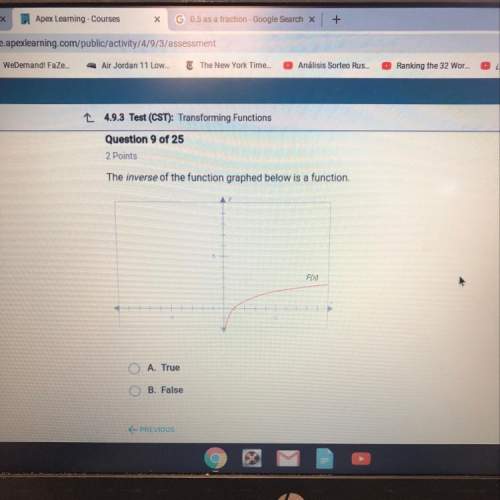
Mathematics, 03.07.2020 18:01 vicinimlv19
A diagnostic test has a 95% probability of giving a positive result when given to a person who has a certain disease. It has a 10% probability of giving a (false) positive result when given to a person who doesn’t have the disease. It is estimated that 15% of the population suffers from this disease.
(a) What is the probability that a test result is positive?
(b) A person recieves a positive test result. What is the probability that this person actually has the disease? (probability of a true positive)
(c) A person recieves a positive test result. What is the probability that this person doesn’t actually have the disease? (probability of a false negative)

Answers: 1


Another question on Mathematics

Mathematics, 21.06.2019 13:00
Adice is rolled 5 times. how many possible rolls are there? ( determine the number of outcomes using only the fundamental counting principal )
Answers: 1


Mathematics, 21.06.2019 23:30
Use the ratio test to determine whether ∑n=14∞n+2n! converges or diverges. (a) find the ratio of successive terms. write your answer as a fully simplified fraction. for n≥14, limn→∞∣∣∣an+1an∣∣∣=limn→∞.
Answers: 3

Mathematics, 22.06.2019 00:00
Which statement explains the relationship between corresponding terms in the table?
Answers: 1
You know the right answer?
A diagnostic test has a 95% probability of giving a positive result when given to a person who has a...
Questions

Computers and Technology, 09.03.2021 18:20

Physics, 09.03.2021 18:20

Business, 09.03.2021 18:20

Geography, 09.03.2021 18:20

Mathematics, 09.03.2021 18:20


Social Studies, 09.03.2021 18:20

Geography, 09.03.2021 18:20



Mathematics, 09.03.2021 18:20

Mathematics, 09.03.2021 18:20




Mathematics, 09.03.2021 18:20

Health, 09.03.2021 18:20

Mathematics, 09.03.2021 18:20


English, 09.03.2021 18:20




